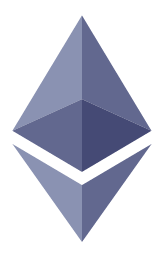Frontier and the Evolution of Ethereum


Readers of CCN.com may be wondering what’s been going on with Ethereum, the much-hyped project of Vitalik Buterin which aims to take smart contracts, block chains, and cryptocurrency to the next level.
The project has recently received multiple endorsements by Nick Szabo, a long-time cipherpunk who many consider to be the most likely candidate for Satoshi Nakamoto. Szabo spoke highly of Ethereum on Let’s Talk Bitcoin and then again in an interview with the International Business Times.
Szabo told the publication that he believed Ethereum could post more of a challenge to traditional legal and financial institutions than even Bitcoin, saying :
Yes, eventually moreso, since Ethereum’s more flexible and general language can facilitate a much wider variety of commercial and other formal relationships. However, the Ethereum community needs to learn to reverse-engineer legal and other traditional patterns instead of trying to re-invent society from scratch. […] It will also take some time for the Ethereum platform to technologically mature, as it has with Bitcoin.
He refers here to the turing complete programming language that is built into the Ethereum platform. Turing complete means that the language is useful and that, in theory, it could be used to solve any problem. Compared with Bitcoin, Ethereum’s “Frontier” release offers a number of exciting possibilities to the entrepreneur or, really, anyone in most industries today.
Many Possible Uses of Ethereum
Of the many possible uses, Ethereum’s website has been updated to suggest a few, from crowdfunding to launching your own cryptocurrency. This is in contrast to the NXT and Counterparty systems, which offer “assets.” Rather, the Ethereum platform aims to enable whole ecosystems to be built on top of it.
Really, this article is only scratching the surface. There’s no telling what clever people might do with something like Ethereum. Vitalik Buterin wrote a blog post a few days ago in which he said that Ethereum was created to see the true potential of block chain technology.
Over time, the vision evolved and expanded. The blockchain remains a crucial centerpiece, but it is ultimately only part of a larger vision of “web 3.0” […] [A] more secure, trustworthy and globally accessible internet for agreements, finance, auditing, tracking and simple websites and web applications that use decentralized technology to overcome some of the practical, political and technological inefficiencies of previous approaches.
Buterin also touched on why the Ethereum Foundation is now struggling to finish work on the project and come out with a first real public release. He says the foundation was a victim of Bitcoin bag holding, and that up to now much of the work on Ethereum had been done via subsidiary organizations.
First of all, it is indeed true that the foundation’s finances are limited, and a large part of this was the result of our failure to sell nearly as much of our BTC holdings as we were planning to before the price dropped to $220; as a result, we suffered roughly $9m in lost potential capital , and a hiring schedule that was meant to last over three years ended up lasting a little under two (although bolstered by a “second wind” from our ETH holdings). […] And fortunately, the community has already stepped up. […] Actually, the Ethereum ecosystem is maturing nicely, and looks unrecognizable from what it was barely a year ago.
Here Buterin listed a dozen or more projects which have been built around the Ethereum platform, including well-known prediction market Augur.
So, what’s going on with Ethereum? Same as always, they’re still in development, but things seem to be maturing into a complete community and viable product. The recent troubles with Bitcoin and its “scalability debate” have led many to believe that such alternatives as Ethereum may, in fact, be worth a second look.